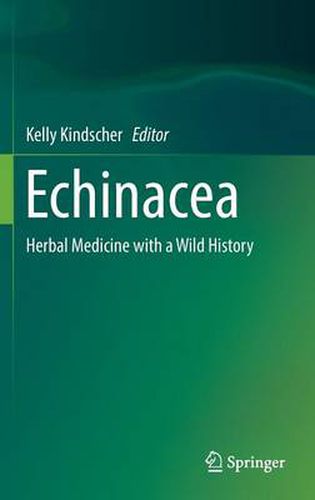Readings Newsletter
Become a Readings Member to make your shopping experience even easier.
Sign in or sign up for free!
You’re not far away from qualifying for FREE standard shipping within Australia
You’ve qualified for FREE standard shipping within Australia
The cart is loading…






This title is printed to order. This book may have been self-published. If so, we cannot guarantee the quality of the content. In the main most books will have gone through the editing process however some may not. We therefore suggest that you be aware of this before ordering this book. If in doubt check either the author or publisher’s details as we are unable to accept any returns unless they are faulty. Please contact us if you have any questions.
This book provides an in-depth analysis of one the of most popular medicinal plants-Echinacea a species that is native to only the US and Canada. There are nine Echinacea species and several roots and above-ground portions of these showy wildflowers have been used in herbal medicine as an immune stimulant and to reduce one’s chances of catching a cold. Considerable medical research supports these claims. The most popular species and the primary one wild-harvested is the one native to the Great Plains, Echinacea angustifolia. It has a long history of use, including being both historically and currently the most widely-used medicinal plant by any of the Great Plains Native Americans. The importance of this species is described by the editor with a few key contributors chosen to relate the important facets of the story of this interesting plant: Echinacea’s biology, ecology, medicinal uses, markets, production and harvest, along with population biology, legal protections, ethnobotany, and history. The US Forest Service has expressed concern about the conservation status of Echinacea species on their lands, especially on the National Grasslands and National Forest units in the northern Great Plains. Overall, the future status of Echinacea, as an important medicinal plant and in the wild is not grim, but this book provides a clear perspective of why both cultivated and wild-harvested Echinacea will continue to be available to consumers without threatening the remaining populations.
$9.00 standard shipping within Australia
FREE standard shipping within Australia for orders over $100.00
Express & International shipping calculated at checkout
This title is printed to order. This book may have been self-published. If so, we cannot guarantee the quality of the content. In the main most books will have gone through the editing process however some may not. We therefore suggest that you be aware of this before ordering this book. If in doubt check either the author or publisher’s details as we are unable to accept any returns unless they are faulty. Please contact us if you have any questions.
This book provides an in-depth analysis of one the of most popular medicinal plants-Echinacea a species that is native to only the US and Canada. There are nine Echinacea species and several roots and above-ground portions of these showy wildflowers have been used in herbal medicine as an immune stimulant and to reduce one’s chances of catching a cold. Considerable medical research supports these claims. The most popular species and the primary one wild-harvested is the one native to the Great Plains, Echinacea angustifolia. It has a long history of use, including being both historically and currently the most widely-used medicinal plant by any of the Great Plains Native Americans. The importance of this species is described by the editor with a few key contributors chosen to relate the important facets of the story of this interesting plant: Echinacea’s biology, ecology, medicinal uses, markets, production and harvest, along with population biology, legal protections, ethnobotany, and history. The US Forest Service has expressed concern about the conservation status of Echinacea species on their lands, especially on the National Grasslands and National Forest units in the northern Great Plains. Overall, the future status of Echinacea, as an important medicinal plant and in the wild is not grim, but this book provides a clear perspective of why both cultivated and wild-harvested Echinacea will continue to be available to consumers without threatening the remaining populations.